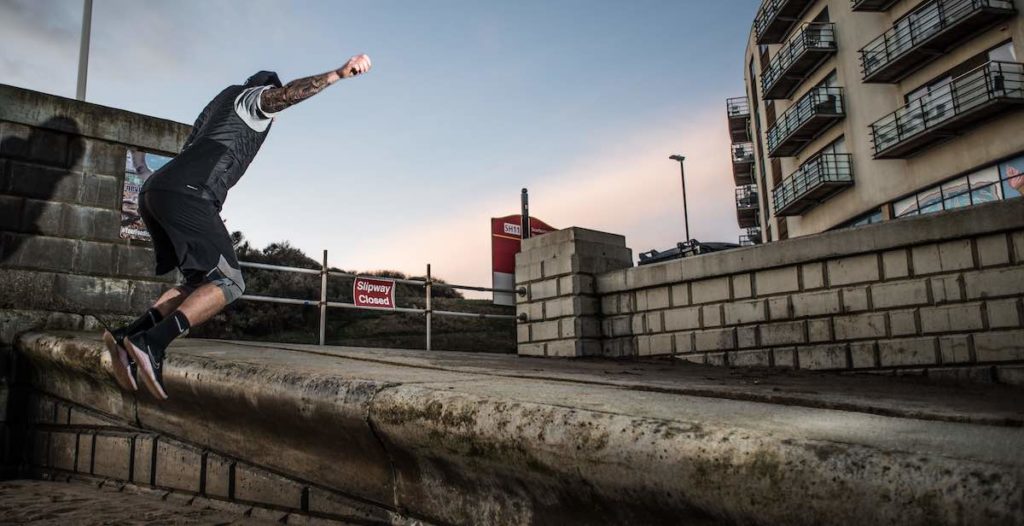In an ideal world, we’d all have access to the gym of our dreams, 24 hours a day and 365 days a year. The reality, however, is often very different, as travel, work and life in general all can conspire against you and your perfect training program. But just because you can’t get to a gym doesn’t mean you can’t still make progress with just your bodyweight and very minimal equipment. We’re not talking optimal progress right here, but it is possible to stave off stagnation for a few months and you might even find your body feels better at the end of it.
Training however is only part of it, you need to be able to track your progress with simple objective test lifts. Just as powerlifter does with the big three: squat, bench and deadlift. Welcome to the bodyweight big three, three movements you can do at home with minimal equipment to test yourself against and measure progress. Just like a one rep max deadlift, these movements are not meant to be part of a training program but instead a yardstick for you to measure your progress against.

The Levels
Testing is one thing but for it to be meaningful you have to know where you’re strong and where you’re lacking. For this I’ve gone for similar levels to what I used on another strength standards article.
Almost Strong – You’re in good shape when compared to your average Joe or Jane and you’re certainly no stranger to bodyweight training. With a moderate base in strength training (and if you’re not a super heavyweight) this level should be achievable within a few weeks of focused effort.
Strong – Your hard earned strength allows you to perform feats of athleticism that most people would not believe possible. This level should be attainable for all, but only with plenty of dedicated training.
Damn Strong – This puts you very firmly in the upper echelon. The pinnacle of bodyweight strength, the only people with even a chance of outperforming you are gymnasts and circus performers. This level requires serious dedication and/or a natural affinity for bodyweight training.
Deficit Handstand Push-Ups
The first thing that comes to mind whenever anyone starts talking about bodyweight strength training is undoubtedly the simple push-up. With good reason, too, as it’s been the staple of strength training routines around the world for as long as we’ve wanted to get stronger. However while the traditional press up might be a great training tool, it’s a little too easy to be a true test of strength.
Instead we’ll be using its tougher cousin, the deficit handstand press up. The rules are simple, find two six inch platforms (you can use anything you have handy, parallettes will work if you have them, but so will books, pans or anything else sturdy) and place them just in front of a smooth wall. With your hands raised up on the platforms kick up against the wall, arms locked out, legs straight and together. Next lower yourself down until your head touches the ground and press yourself back up to lockout using only your arms. No kipping, leg drive, or crazy back bends.
| Male | Female | |
| Almost Strong | 5 | 1 |
| Strong | 12 | 5 |
| Damn Strong | 20 | 10 |
Towel Pull-Ups
As much as we all might wish it was otherwise, we don’t always have access to a pull-up bar, but we can all get our hands on a towel and hopefully somewhere to hang it. It doesn’t matter where as long it’s high enough off the ground for you to do a full towel pull-up.
Here are the rules: throw that towel (make it a decent sized one not a washcloth) over whatever door frame, tree branch or railing you find, leaving you with two equal lengths of fabric. Grab one with each hand, hang with straight arms and pull yourself up with minimal momentum until your chin is level with your hands, lower yourself to the starting position and repeat.
If you’ve never tried these before, prepare to be humbled.
| Male | Female | |
| Almost Strong | 15 | 5 |
| Strong | 25 | 10 |
| Damn Strong | 30 | 20 |
Broad Jump
Training legs with body weight alone, can be a big task in itself and testing true lower body strength without any external load is nigh on impossible. Both the pistol squat and split squat have their merits, but the first requires too much skill/mobility for a strength test and the second really needs loading to test strength.
Instead we’re using a pure test of lower body power, the standing broad jump. Start with your feet behind a line, squat down and jump forward as far as you can. Your distance is counted from that line to where the heel of your back foot lands.
While this isn’t a high skill test, you will find that a little practice goes a long way. Warm up with a few practice jumps and then you can have as many attempts you want. Be prepared, though, as you’ll find yourself quickly burning out.
| Male | Female | |
| Almost Strong | 2. 0 m | 1. 8 m |
| Strong | 2. 5 m | 2. 2 m |
| Damn Strong | 3. 2 m | 2. 7 m |